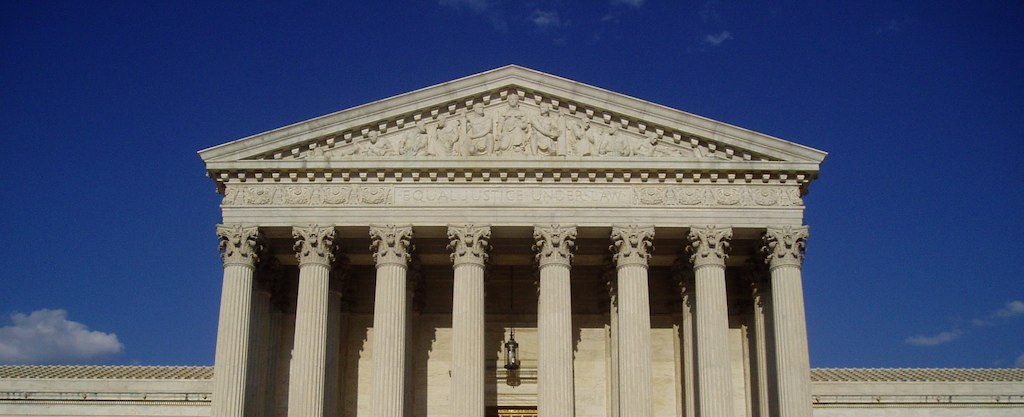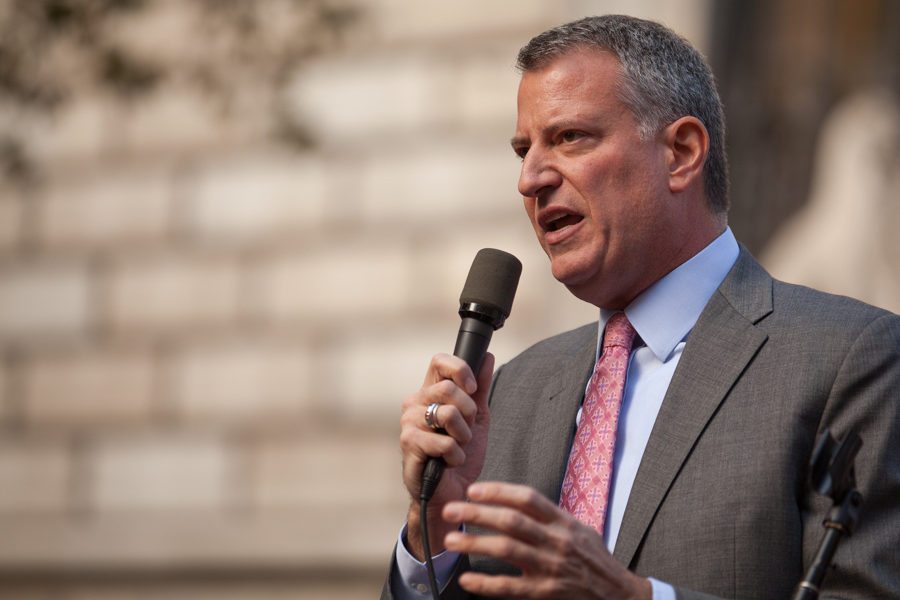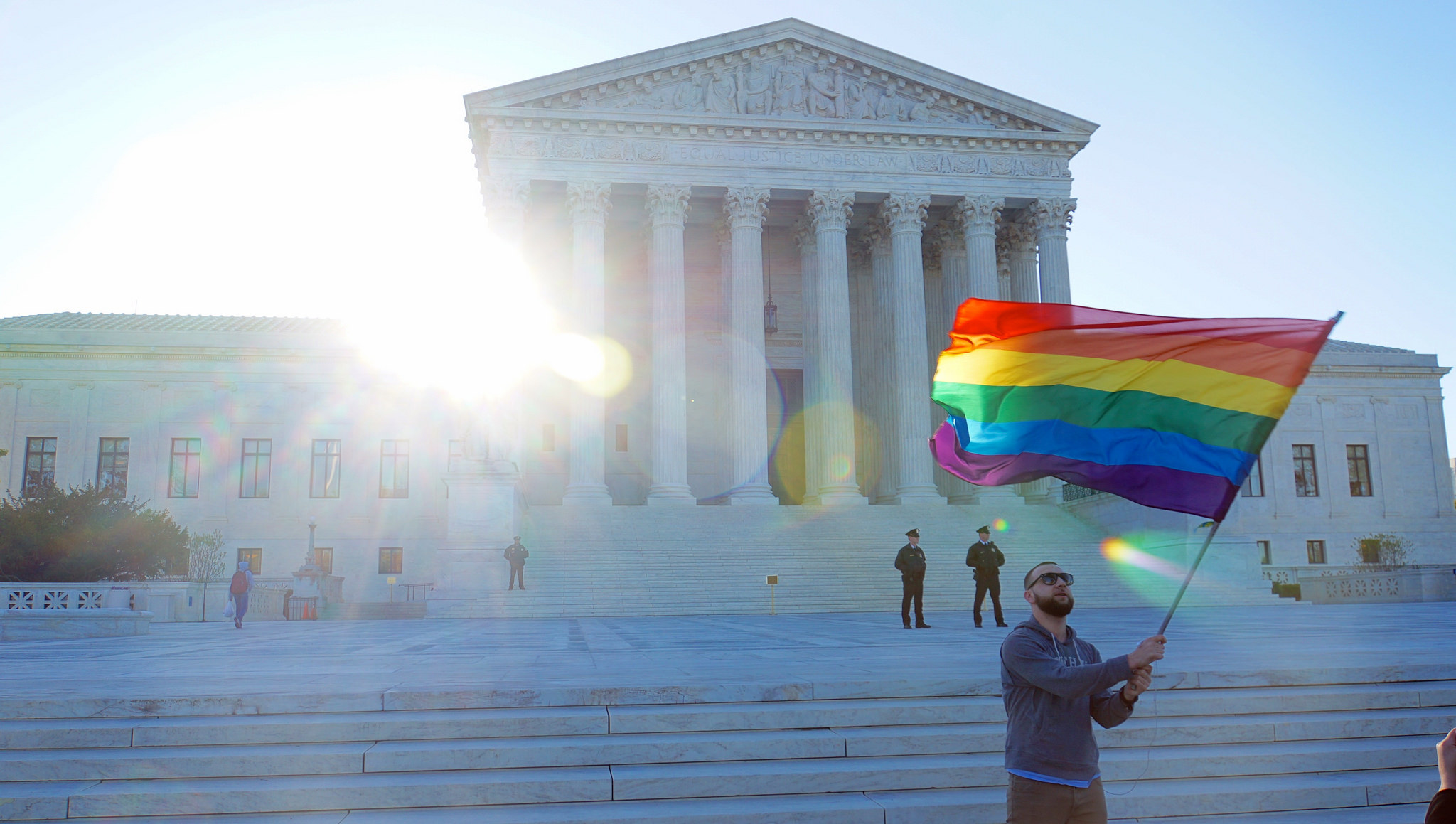Washington, D.C.—The Supreme Court on Monday heard arguments in a case that will decide whether or not the United States Department of Agriculture (USDA) will have to disclose retailers’ sales data from the federally-funded Supplemental Nutrition Assistance Program (SNAP, formerly food stamps). It will likely announce its decision later this summer.
If the court rules that the agency does have to release retailers’ SNAP sales information, the public will learn more about which grocery companies generate the most income from the program. The last—and most recent—public disclosure of that information happened by accident in 2013, when a Walmart executive let slip at a dinner party that the company made $13 billion from the program.
It’s impossible to predict what disclosure of the data will mean for public opinion on large grocery companies, but retailers like Walmart and Amazon have recently received criticism for their employees’ reliance on SNAP benefits. An additional data point about corporate dollar gains from the program could keep those companies in the spotlight. SNAP sales transparency would also provide crucial data for researchers who study the public health impacts of retailers’ advertisements around SNAP distribution dates.
The Argus Leader, a South Dakota-based newspaper, first sought the disclosure of this data through the Freedom of Information Act (FOIA) in 2010. Since 1966, FOIA has required the government to release previously undisclosed documents to the public unless they fall under one of nine exemptions. USDA denied the Leader’s request based on Exemption 4, which protects “trade secrets and commercial or financial information.”
The Eighth Circuit’s decision, which was announced in May of 2018, determined that the release of SNAP sales data was not likely to cause substantial competitive harm, meaning FMI’s argument failed the test established in National Parks. I outlined some of the arguments for and against the “substantial competitive harm” question in August.
According to agricultural economist Ricky Volpe, who testified on behalf of the Leader on Monday, it’s unclear how retailers might use each others’ SNAP sales to gain a competitive edge. Would high SNAP sales mean the competition is more motivated to build stores nearby (the logic being that they’re moving near a large group of customers who have a guaranteed food budget every month)? Or would the competition instead choose to locate in wealthier areas (the logic being that high SNAP sales mean low neighborhood incomes and less spending power)? Volpe also argued that large-scale retailers are using such sophisticated data to make decisions about pricing and location that competitors’ SNAP sales likely wouldn’t add much additional insight. FMI has argued that retailers operate on thin profit margins and any disclosure would threaten “the jobs they provide and the communities they nurture.”
“From my perspective, I thought we were fairly well able to argue our side of the case: that this very clearly, as we demonstrated in the lower courts, this is basic public information, and trying to decide between what the definition of “confidential” is and all of that can get into the weeds,” says Cory Myers, news director for The Argus Leader. “But at its base, this is a very basic request, the kind of request that journalists make from their governments all the time, and I feel like our lawyer was able to portray that, and in fact some of the justices’ questions specifically addressed that. Justice Bader Ginsburg asked about the broadness of its impact and what this means for FOIA.”
The justices also spent a lot of time questioning whether or not FMI should be able to intervene in this case at all. Justice Sonia Sotomayor asked why the group had the right to argue the case when the government had declined to appeal in 2017. The Leader has also challenged FMI’s standing in the case.
Melissa Wasser, coalition director for News Media for Open Government, which advocates on issues surrounding press freedom, says she was somewhat surprised by the amount of time the justices spent on the question of FMI’s standing as an intervenor. If the court rules that FMI did not have the right to bring this case in the first place, the broader questions surrounding Exemption 4 would be saved for a later date. “They took a round of gay marriage cases in 2013, and they heard the arguments, and people thought this was it,” she says. “The court was like, ‘nope, they don’t have standing.’” In that case, too, the court declined to make a determination on several cases before it ultimately ruled in favor of same-sex marriage.
Justices Samuel Alito and Neil Gorsuch appeared to challenge the precedent set by National Parks. Contrasting the D.C. Circuit’s “substantial competitive harm” test with a dictionary interpretation of the word “confidential,” Justice Alito presented a hypothetical to the Leader’s lawyers: If a statute set a deadline of 30 days, and then a court interpreted that deadline to mean 50 days, and everyone accepted the 50-day deadline, does that mean the Supreme Court should also accept a 50-day deadline? Justice Gorsuch followed up by asking where, in the 30-vs-50-day example, the justices’ tools of interpretation should take their cue: In the literal text or in three decades’ interpretation of the text by lower courts and by Congress? (The Leader argued that Congress had validated the National Parks decision by declining to reverse this interpretation of Exemption 4, despite having had many opportunities to do so.)
The Court could take its decision in many different directions. It could decide that FMI did not have the right to intervene in the case and therefore decline to rule on Exemption 4. It could decide to overturn National Parks in favor of a dictionary-based, business-friendlier definition of “confidential.” It could even invent its own definition of “confidential,” or offer clarification of the “substantial competitive harm” test.
We’ll find out later this summer.











